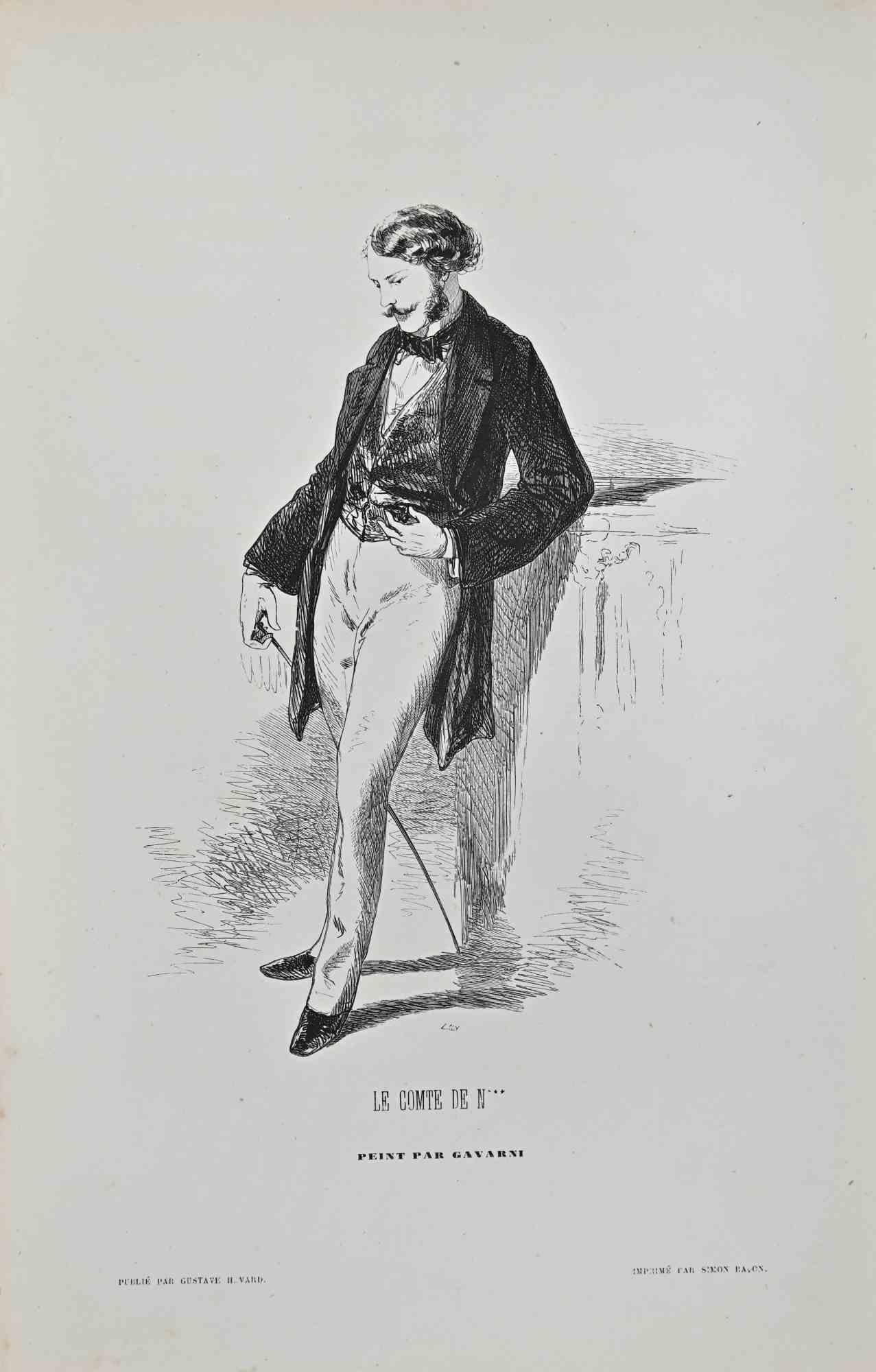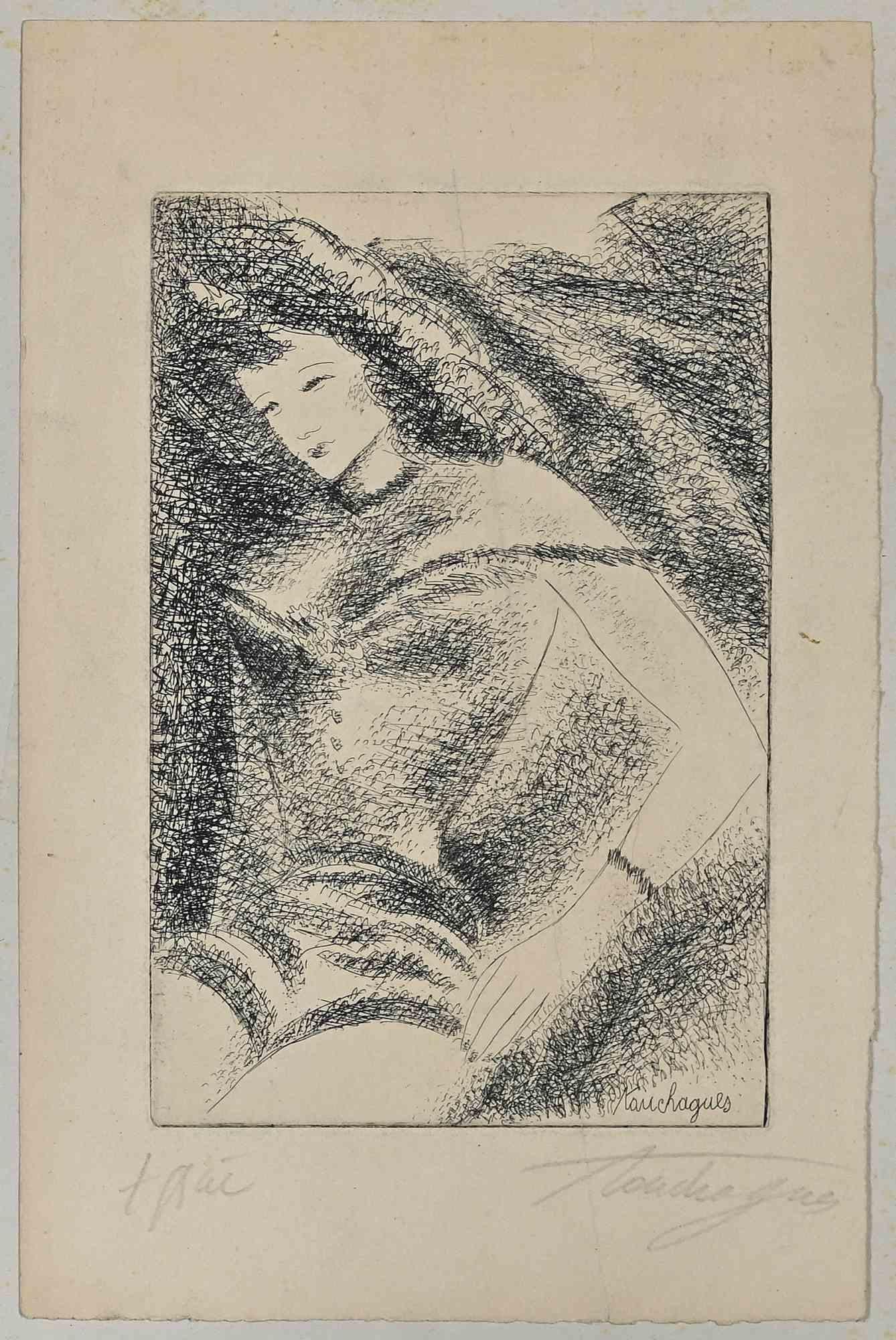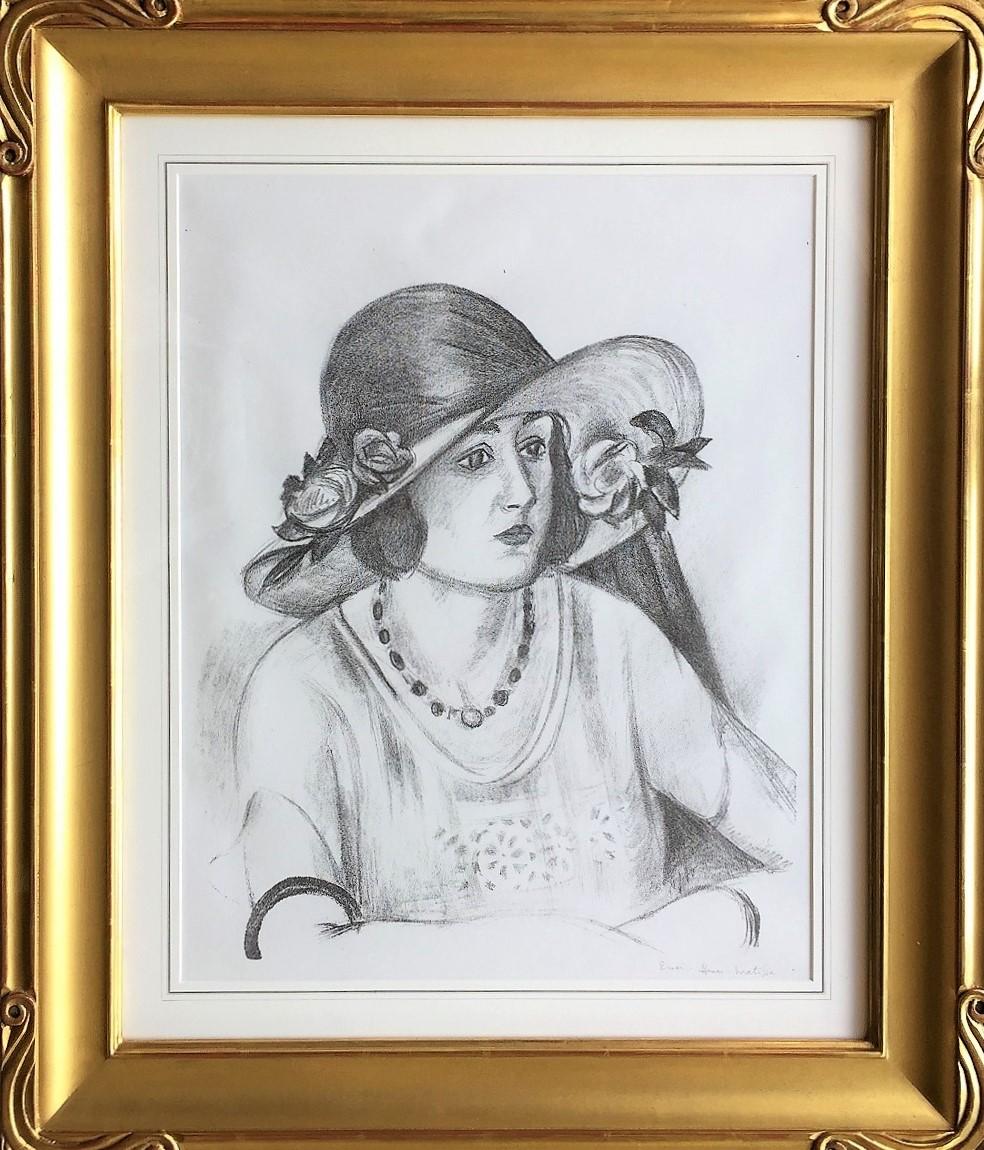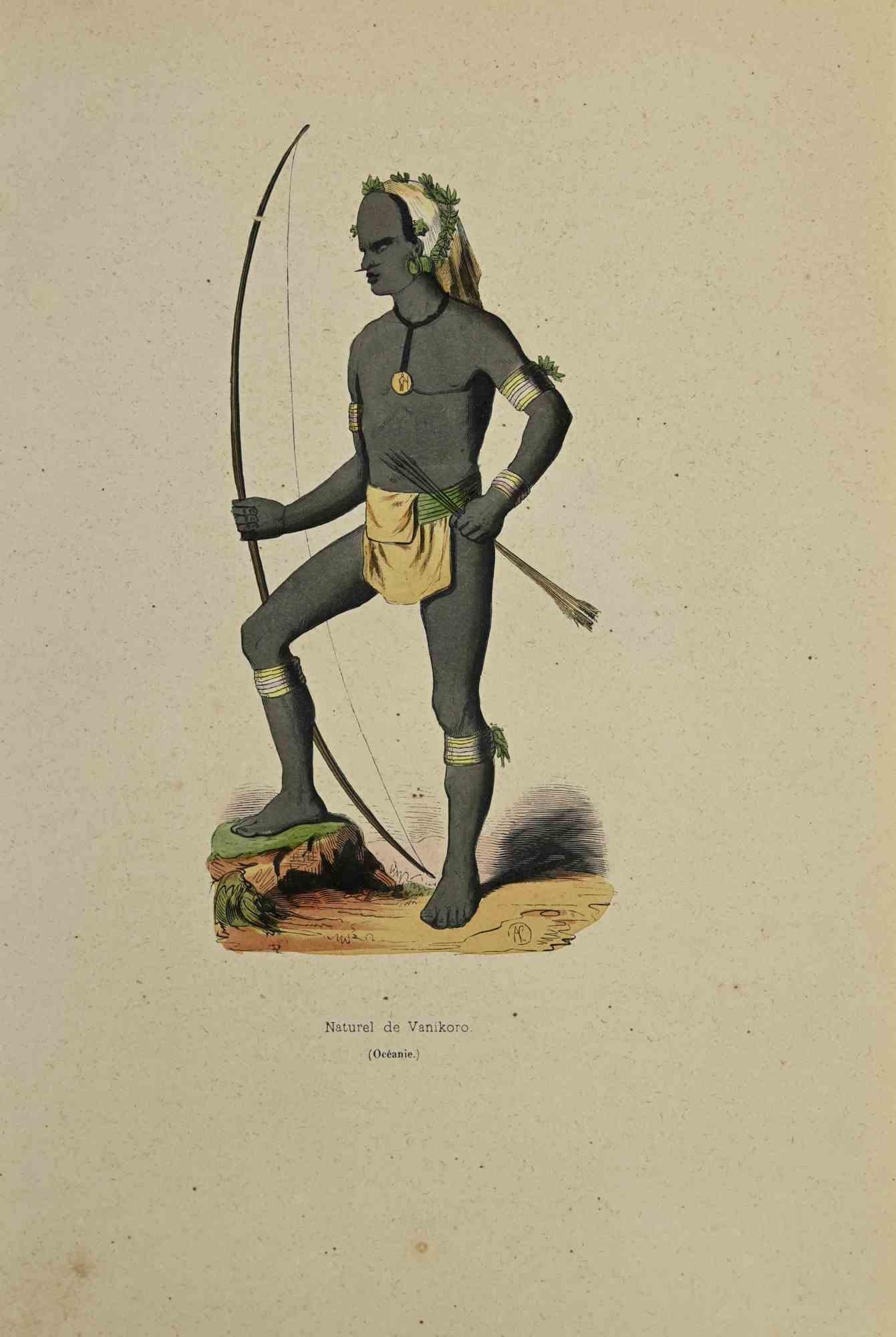Items Similar to Femininity - Lithograph
Want more images or videos?
Request additional images or videos from the seller
1 of 10
Jules PascinFemininity - Lithograph1965
1965
About the Item
(after) Jules Pascin
Title: Femininity
Signed in the plate
Dimensions: 38 x 28 cm
from the edition of 250 as issued in Warnod, Andre, "Les Peintres mes amis" (Paris: Les Heures Claires, 1965)
Jules Pascin, born Julius Mordechai Pincas, was a Bulgarian Jewish painter sometimes referred to as "the Prince of Montparnasse."
He was born on March 31, 1885 in Vidin, Bulgaria to a Spanish-Sephardic Jewish father and a Serbian-Italian mother, the eighth of eleven children. The Pincas family moved to Bucharest, Romania in 1892 and Pascin was raised there until he left for boarding school in Vienna in 1896.
While briefly working for his father’s grain merchant firm in Bucharest at fifteen, Pascin spent much of his time completing his earliest drawings in the local bordello, where he was residing under the Madame’s protection. In 1902, at the age of seventeen, Pascin moved to Vienna to study painting. The next year, he studied at the Heymann Art School in Munich. There, he supported himself by selling satirical drawings to Simplicissimus and other German magazines. Pascin would contribute drawings to a Munich daily through 1929.
Pascin’s contributions were widely recognized for their wit and insight, and upon his arrival in Paris in 1905 he was welcomed at the Gare Montparnasse by an international group of artists and writers who gathered at the Café du Dôme, which Pascin soon began to frequent regularly. The group included Grossman, Grosz, William Howard, Levy, and Emil Orlik. Pascin was also a close friend of Amadeo Modigliani.
Upon his arrival in Paris, Julius Mordechai Pincas changed his name to Jules Pascin and soon became the symbol of the Montparnasse artist community. Always in his bowler hat, he was a witty presence at Le Dôme café, Le Jockey club, and the others haunts of the area’s bohemian society, and was known for hosting legendary all-night parties. In his story, A Moveable Feast, Ernest Hemingway wrote a chapter titled With Pascin At the Dôme, recounting a night in 1923 when he had stopped off at Le Dôme and met Pascin escorted by two models. Hemingway's depiction of the events of that night is considered one of the defining images of Montparnasse at the time.
In 1907, Pascin had his first solo exhibition at Paul Cassirer Gallery in Berlin. Three years later, Cassirir commissioned Pascin to illustrate Heinrich Heine's Aus den Memoiren des Herrn von Schnabelewopski. In 1911, Pascin exhibited his work at Berlin Secession and a year later at the Sonderbund-Aussstellung in Cologne. The artist’s first exhibition in the United States was at the Armory Show in New York, where he exhibited twelve of his works.
Upon the outbreak of World War I, Pascin left Paris for London in order to avoid conscription in the Bulgarian Army. In October 1914, he immigrated to New York, where he stayed through 1920 and would later return again in 1927. Pascin was immediately welcomed into an artists circle based around the Penguin Club and became acquainted with John Quinn, an important art collector. A short time after his arrival in New York, Pascin was given a one-man show by the Berlin Photographic Company, a Madison Avenue gallery. While in New York, Pascin became associated with several progressive painters, including Walt Kuhn, Yasuo Kuniyoshi, and Max Weber. Many of these painters were influenced by Pascin’s unique style, in which he combined elements from Expressionism and Cubism with his own personal view of his environment.
Pascin used his time in the United States to travel extensively, especially in the southern states and the Caribbean islands, recording his travels in sketches that were widely acclaimed. Pascin married Hermine David in 1918. In 1920, Pascin was awarded American citizenship with support from Alfred Stieglitz and Maurice Sterne. He returned to Paris in October of that same year and met his future mistress, Lucy Krohg, the wife of the Norwegian painter Per Krohg.
While his exhibitions were generally very well received, a series of unfavorable reviews in 1930 of his exhibition at the Kniedler Galleries in New York, threw Pascin into a severe depression. After visiting his own prestigious solo exhibition at the Galerie Georges Petit on June 2nd, 1930, Pascin committed suicide by slitting his wrists and hanging himself in his studio in Montmartre. On the wall he left a message written in his own blood that said good-bye to his lost love, Elvire "Lucy" Ventura.
On the day of Pascin’s funeral, all the galleries in Paris closed. Thousands of acquaintances from the artistic community along with dozens of waiters and bartenders from the restaurants and saloons he had frequented all dressed in black and walked behind his coffin the three miles to the Cimetière de Saint-Ouen.
- Creator:Jules Pascin (1885-1930, Bulgarian, French)
- Creation Year:1965
- Dimensions:Height: 14.97 in (38 cm)Width: 11.03 in (28 cm)Depth: 0.04 in (1 mm)
- Medium:
- Movement & Style:
- Period:
- Condition:
- Gallery Location:Collonge Bellerive, Geneve, CH
- Reference Number:1stDibs: LU16122412453
About the Seller
4.9
Gold Seller
These expertly vetted sellers are highly rated and consistently exceed customer expectations.
Established in 2015
1stDibs seller since 2015
908 sales on 1stDibs
Typical response time: 2 hours
- ShippingRetrieving quote...Ships From: Collonge Bellerive, Geneve, Switzerland
- Return PolicyA return for this item may be initiated within 7 days of delivery.
More From This SellerView All
- Pablo Picasso - Painter and His Model - Original LithographBy Pablo PicassoLocated in Collonge Bellerive, Geneve, CHPablo Picasso - Original Lithograph Title: Painter and his Model Edition of 180 From the book "Regards sur Paris" (Paris: Andre Sauret, 1962) Unsigned, as issued Dimensions: 39 x 30 cm References: Mourlot 354, Bloch 1035 Pablo Picasso Picasso is not just a man and his work. Picasso is always a legend, indeed almost a myth. In the public view he has long since been the personification of genius in modern art. Picasso is an idol, one of those rare creatures who act as crucibles in which the diverse and often chaotic phenomena of culture are focussed, who seem to body forth the artistic life of their age in one person. The same thing happens in politics, science, sport. And it happens in art. Early life Born in Malaga, Spain, in October of 1881, he was the first child born in the family. His father worked as an artist, and was also a professor at the school of fine arts; he also worked as a curator for the museum in Malaga. Pablo Picasso studied under his father for one year, then went to the Academy of Arts for one year, prior to moving to Paris. In 1901 he went to Paris, which he found as the ideal place to practice new styles, and experiment with a variety of art forms. It was during these initial visits, which he began his work in surrealism and cubism style, which he was the founder of, and created many distinct pieces which were influenced by these art forms. Updates in style During his stay in Paris, Pablo Picasso was constantly updating his style; he did work from the blue period, the rose period, African influenced style, to cubism, surrealism, and realism. Not only did he master these styles, he was a pioneer in each of these movements, and influenced the styles to follow throughout the 20th century, from the initial works he created. In addition to the styles he introduced to the art world, he also worked through the many different styles which appeared, while working in Paris. Not only did he continually improve his style, and the works he created, he is well known because of the fact that he had the ability to create in any style which was prominent during the time. Russian ballet In 1917, Pablo Picasso joined the Russian Ballet, which toured in Rome; during this time he met Olga Khoklova, who was a ballerina; the couple eventually wed in 1918, upon returning to Paris. The couple eventually separated in 1935; Olga came from nobility, and an upper class lifestyle, while Pablo Picasso led a bohemian lifestyle, which conflicted. Although the couple separated, they remained officially married, until Olga's death, in 1954. In addition to works he created of Olga, many of his later pieces also took a centralized focus on his two other love interests, Marie Theresa...Category
1960s Modern Portrait Prints
MaterialsLithograph
- Jean Cocteau - Original LithographBy Jean CocteauLocated in Collonge Bellerive, Geneve, CHUntitled Original Lithograph by Jean Cocteau with the printed signature, as issued Dimensions: 40 x 30 cm Including artist's stamp Jean Cocteau Writer, artist and film director Je...Category
1950s Modern Figurative Prints
MaterialsLithograph
- Jean Dubuffet - original lithograph from XXe Siecle magazineBy Jean DubuffetLocated in Collonge Bellerive, Geneve, CHJean Dubuffet - Original Lithograph from XXe Siecle magazine 1958 Dimensions: 32 x 25 cm Edition: G. di San Lazzaro. Unsigned and unumbered as issuedCategory
1960s Modern Figurative Prints
MaterialsLithograph
- Alexander Calder - Original Lithograph - Behind the MirrorBy Alexander CalderLocated in Collonge Bellerive, Geneve, CHAlexander Calder - Original Lithograph - Behind the Mirror Original lithographs produced in 1976 Dimensions: 38 x 56 cm Source: Derrière le miroir (...Category
1970s Modern Portrait Prints
MaterialsLithograph
- Marc Chagall - The Bible - Ahasuerus Sends Vasthi Away - Original LithographBy Marc ChagallLocated in Collonge Bellerive, Geneve, CHMarc Chagall, Original Lithograh depicting an instant of the Bible. Technique: Original lithograph in colours (Mourlot no. 234) On the reverse: another black and white original litho...Category
1960s Modern Figurative Prints
MaterialsLithograph
- Marc Chagall - The Bible - Rachel - Original LithographBy Marc ChagallLocated in Collonge Bellerive, Geneve, CHMarc Chagall, Original Lithograh depicting an instant of the Bible. Technique: Original lithograph in colours (Mourlot no. 234) On the reverse: another black and white original litho...Category
1960s Modern Figurative Prints
MaterialsLithograph
You May Also Like
- La Capeline de Paille d'Italie (The Italian Straw Hat).By Henri MatisseLocated in Storrs, CTLa Capeline de Paille d'Italie (The Italian Straw Hat). 1923. Lithograph. Duthuit 430. 17 3/4 x 15 3/4 (sheet 23 1/8 x 17 7/8). Trial proof, apart fr...Category
Early 20th Century Modern Portrait Prints
MaterialsLithograph
- Femme de Jalapa - Lithograph by Auguste Wahlen - 1844Located in Roma, ITFemme de Jalapa is a hand colored lithographs realized by Auguste Wahlen in 1844. Good conditions. The artwork belongs to the Suite Moeurs, usages et costumes de tous les peuples ...Category
1840s Modern Figurative Prints
MaterialsLithograph
- Naturel de Vanikoro - Lithograph by Auguste Wahlen - 1844Located in Roma, ITNaturel de Vanikoro is a hand colored lithographs realized by Auguste Wahlen in 1844. good conditions. the artwork belongs to the Suite Moeurs, usages et costumes de tous les peupl...Category
1840s Modern Figurative Prints
MaterialsLithograph
- The Posing Woman - Original Lithograph by Louis Touchagues - Mid-20th centuryBy Louis TouchaguesLocated in Roma, ITThe Posing Woman is an Original lithograph realized by Louis Touchagues in the mid 20th Century. Hand-signed on the lower by the artist and signed on the plate. Included a Passepar...Category
Mid-20th Century Modern Portrait Prints
MaterialsLithograph
- Le Comte De N - Lithograph By Paul Gavarni - mid 19th centuryBy Paul GavarniLocated in Roma, ITLe Comte De N is a lithograph on ivory-colored paper, realized by the French draftsman Paul Gavarni (alias Guillaume Sulpice Chevalier Gavarni, 1804-1866) in the mid-19th Century. S...Category
Mid-19th Century Modern Figurative Prints
MaterialsLithograph
- Duval Pere - Lithograph By Paul Gavarni - mid 19th centuryBy Paul GavarniLocated in Roma, ITDuval Pere is a lithograph on ivory-colored paper, realized by the French draftsman Paul Gavarni (alias Guillaume Sulpice Chevalier Gavarni, 1804-1866) in the mid-19th Century. Signed on the plate" Par Gavarni". From series of "Masques et Visages". Titled on the lower. Very Good conditions. Paul Gavarni (Paris, 1804 – 1866). Gavarni's father, Sulpice Chevalier, was from a family line of coopers from Burgundy. Paul began work as mechanical work in a machine factory but he saw that to make any progress in his profession, he had to be able to draw; accordingly, in his spare time in the evenings, he took classes in drawing. He devoted his special attention to architectural and mechanical drawing and worked at land surveying...Category
Mid-19th Century Modern Figurative Prints
MaterialsLithograph





